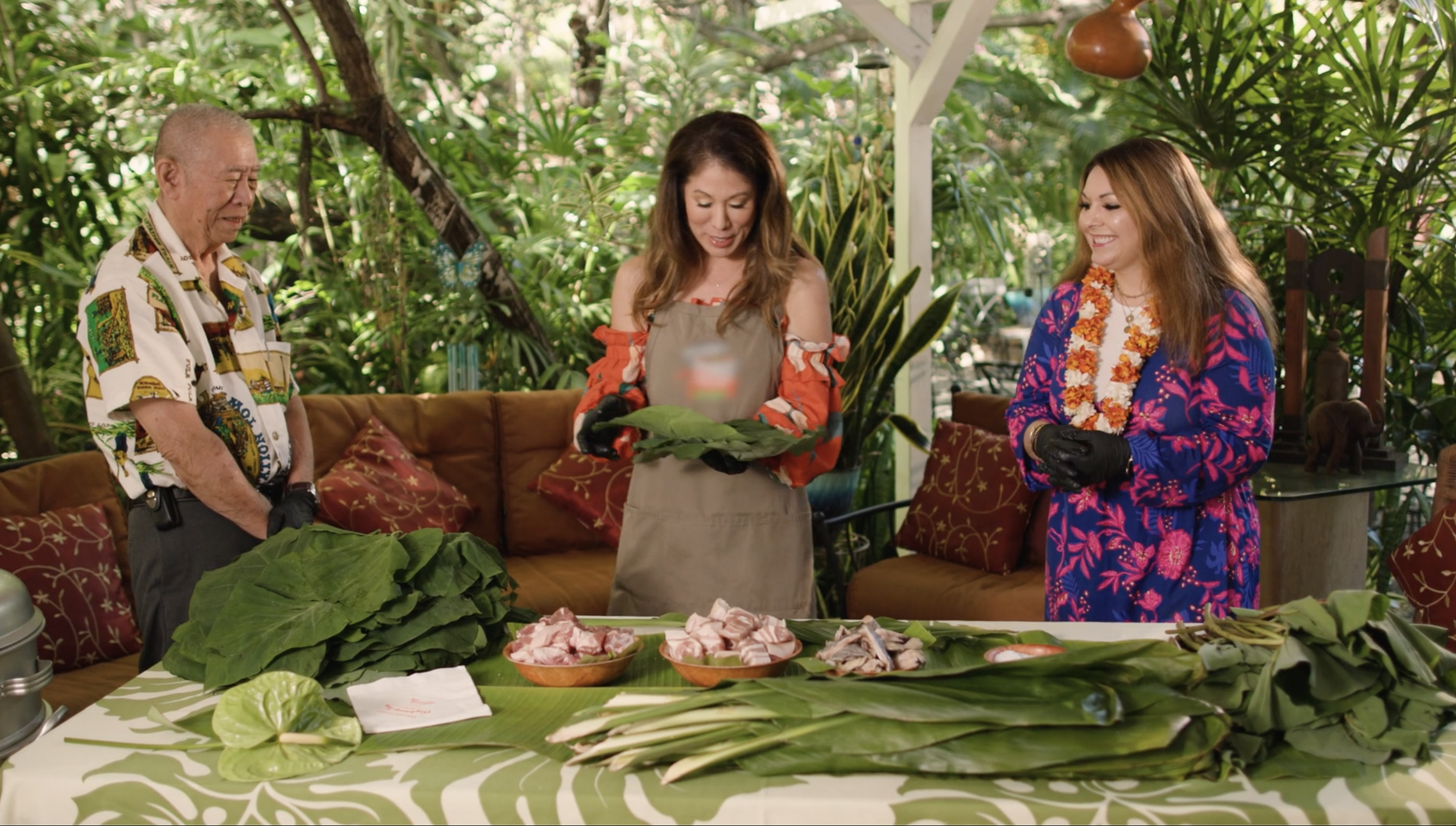In Hawai‘i, taro is not just food. Known as kalo, this plant is revered as the elder sibling of the Hawaiian people, a living ancestor in the islands’ creation story. Cultivating, preparing, and sharing kalo is a cultural practice that nourishes body, spirit, and community. Across Hawai‘i, Native Hawaiian farmers, chefs, and educators are restoring taro patches, reclaiming knowledge passed down for generations, and reestablishing the crop’s role in daily life. In this episode, we meet the people carrying forward this work, those who view kalo as not just a crop, but as a foundation for sovereignty, memory, and identity.
Hanalei Taro: A Family’s Legacy in the Lo‘i
Taro farming is a living bond across generations. In the fertile Hanalei Valley on Kauaʻi, Capri visits Hanalei Taro, where sixth-generation farmers like Lyndsey Haraguchi-Nakayama and her family are stewards of the land and its history. For the Haraguchis, taro farming is more than a livelihood. It is an obligation to ancestors and a contribution to future generations. Lyndsey shares how her father and grandparents taught her to work the loʻi (irrigated taro patch) using traditional Hawaiian techniques, and how the family has adapted to changing climates and economic pressures while staying rooted in culture. Capri also meets Ladd Ka-hai Ah Choy of Ho’oulu Punalu’u Farms, as he expresses his kuleana to care for the land and to properly manage the resources and gifts it provides. As he farms for the people who came before him and for future generations, he helps ensure they always have food and space to thrive.
Pounding Taro, Preserving Culture
Poi, a staple starch made by pounding cooked taro root, is a cultural symbol, present at nearly every Hawaiian gathering, from baby’s first luʻau to ancestral offerings. Capri visits the Waiahole Poi Factory on Oʻahu, where poi has been made for the community since 1905. The factory was revitalized in the 1970s by Charlene and Calvin Hoe as part of a larger effort to restore Hawaiian cultural practices. Their son, Liko Hoe, now runs the business, which serves as both an art gallery and a restaurant. Capri and Liko prepare freshly boiled taro root on a traditional poi board, with taro provided by farmer Ladd Ah Choy. Liko shows Capri how to hand-pound the root into poi, explaining the stages of mashing, pounding, and the natural fermentation process that gives poi its iconic flavor. Afterward, they share a meal of fresh poi and octopus luʻau stew, and Liko reflects on the significance of poi in Hawaiian identity and history.
Sweet Traditions with Pomai Kulolo
Capri explores the sweet side of taro at the Honolulu Farmers Market, where she meets Keanue Kekaula of Pomai Kulolo. Keanue and his siblings carry on their family’s tradition of selling Hawaiian desserts directly to the community. Capri samples kulolo, a chewy, pudding-like treat made from taro, coconut milk, and sugar, and haulolo, an original creation by Keanue’s uncle that layers haupia (coconut pudding) on top of kulolo. Keanue walks Capri through the process of making kulolo from scratch and shares how their roadside vending roots evolved into a popular market presence. Capri gets a taste of how innovation and tradition blend in Hawai‘i’s evolving dessert culture.
Laulau and Legacy
Capri meets Monica Toguchi Ryan, third-generation owner of Highway Inn, a family restaurant first opened by her grandparents in 1947. Together, they prepare laulau, a traditional Hawaiian dish made with pork shoulder and salted butterfish wrapped in lūʻau leaves (from the taro plant) and steamed in ti leaves. As they wrap the bundles, Monica shares her family’s story, including how her grandfather Seiichi Toguchi learned to cook during his time in World War II internment camps and later opened the restaurant to support his growing family. Capri joins Monica and her relatives for a family meal featuring laulau and classic Hawaiian side dishes like poi, lomi salmon, and chicken long rice. The meal concludes with a hula performance, celebrating the joy and unity of family traditions carried forward through food.
Taro tells the story of Hawai‘i. It connects people to each other, to the ʻāina (land), and to a past that still guides the future. From the lo‘i of Hanalei to the kitchens of cultural chefs and the classrooms of community farms, kalo is an embodiment of Hawaiian values: sacred, resilient, and central to identity. In a world searching for deeper roots, taro reminds us that food can be more than nourishment. It can be a bridge to who we are, where we come from, and where we are going.
